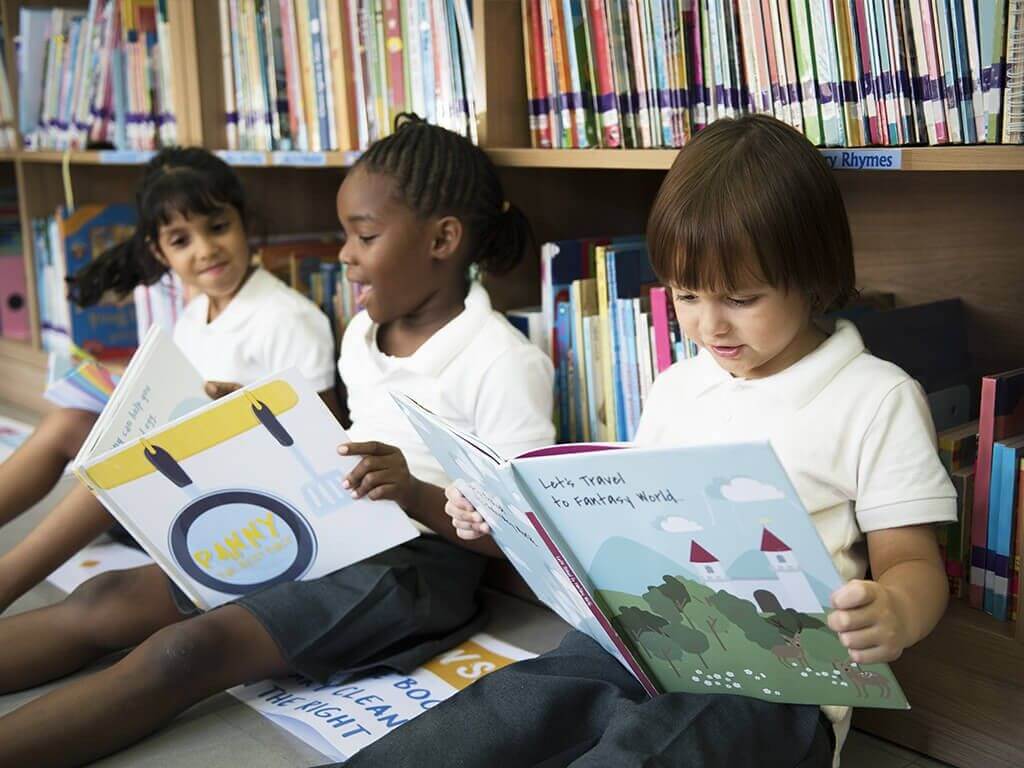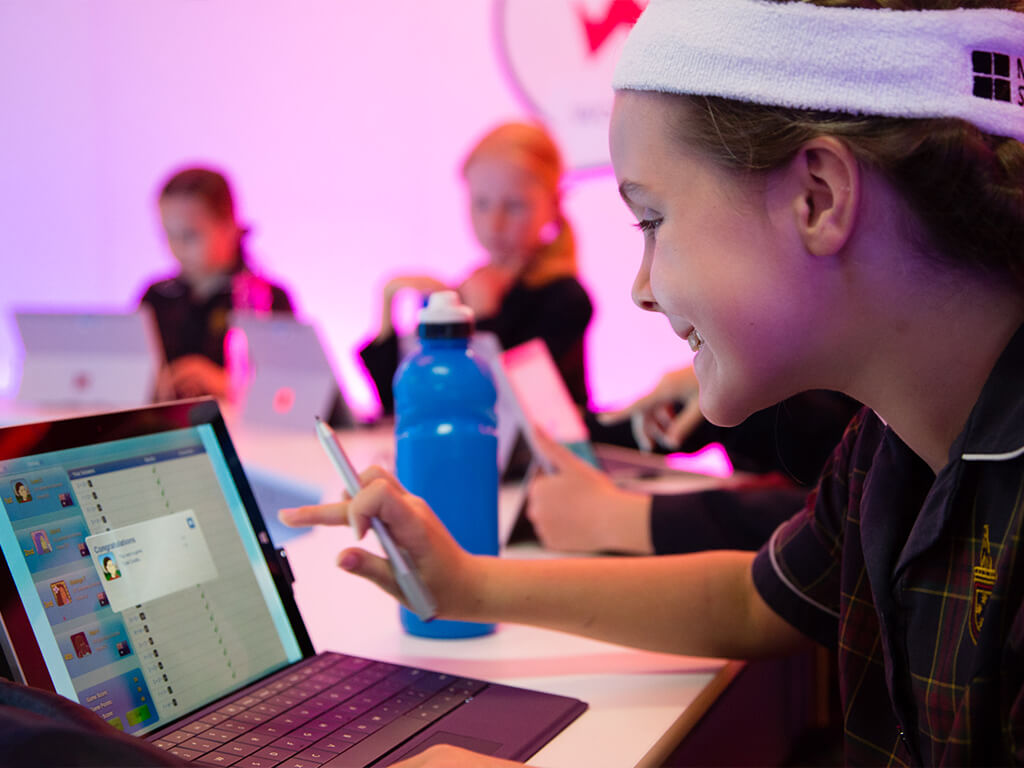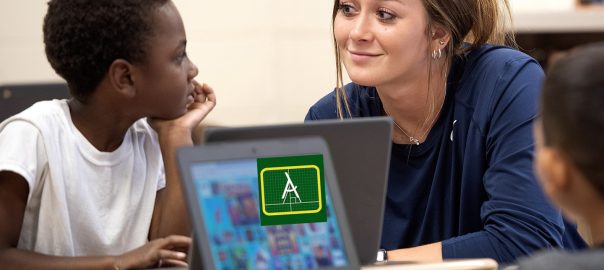The United States is one of the few countries in the world that does not have a nationalized curriculum. The combination of local and state control allows for extraordinary leverage on outcome decisions and content alignment. Our country’s preservation of state’s rights empowers schools and states to contextualize both policy and implementation. Federal oversight comes, typically, with leveraged grants to encourage participation. The policies articulated in the No Child Left Behind Act and Every Student Succeeds Act fall into this category.
In many high schools in the nation, the traditional course sequence and graduation requirements remain static: four years of English, three years of math, three years of science, etc. Both mathematical and language literacies still hold major importance for every graduate. And, as the world becomes more complex and unpredictable, new consideration should be given to the required core content.
We talk a lot about the most innovative learner-centered schools that combine personalized, competency-based and project-based learning co-designed around real-world experiences. Here, content emerges from student interest in high-purpose topics while also linking to standards or competencies. These learning environments are challenging the Carnegie status quo and sit on the horizon of education. While important signals for the future of learning, they remain the minority.
Updating content areas would accelerate learning around three core types of skills expected by schools: core skills (typically the skills of writing, reading, mathematics, history, arts found in state standards), technological skills (industry skills earned through CTE programs, work-based learning, apprenticeships, career pathways, etc.), and transferable skills (durable skills, XQ). Weaving in the content below will create engaging and future forward ways to nurture the core, technological and durable skills while preparing young people to govern, contribute and thrive as adults.
Next-Gen Economics
Every learner should engage in learning about entrepreneurship. Releasing a generation of empowered problem-solvers equipped with the tools to contribute to ventures that have both financial and/or social impact, helps future generations find their sense of purpose and ownership. Uncharted Learning, the National Foundation for Teaching Entrepreneurship (NFTE), and KnoPro from NAF all provide resources to embed entrepreneurial experiences and content.
Additionally, with both our country and many individuals experiencing significant debt, financial literacy remains low for graduates. Yet, it can have the most profound outcome on financial stability. Budgeting, credit, borrowing, and investing increase the long-term probability of financial stability for graduates. Both entrepreneurship and personal finance are well-represented in those who choose the CTE Finance or CTE Business and Administration career clusters, but this is not universally available. Many free or low-cost resources exist (see list here).
Artificial Intelligence
While school leaders and educators still are in the early stages of understanding the impact of AI, there is no doubt that it will rapidly become immersed in the education sector (likely in hyper-personalized learning of core skills and support for learning design and assessment). However, every graduate should understand the core principles of AI functionality and how to use it to augment intelligence and performance. These skills will be requisite in almost every future professional career. TeachAI.org recently released a guide for AI implementation while some districts, like Gwinnett County Public Schools, offer an AI CTE program pathway.
Civics and Citizenship
While often found in civics classrooms, the content remains less about good citizenship and more about the structures and function of government. While the structures and function are important, every student should understand their role in a democracy through political processes, how to move an idea to action, and community organizing for change. For example, the United States, with less than 50% of eligible 18-29 year old voters participating in elections, is in dire need of core education in civics. Organizations such as iCivics and Citizens and Scholars offer innovative and engaging approaches to civic education.
Few other influential forces impact the current (and future) generations like digital media. The power of disinformation, misinformation, bias, etc. propagated through heavily financed algorithms will only increase. High school graduates need the tools and filters to process and evaluate everything they see online to better understand ways to get to the truth. Advances in AI around image, audio and video generation will make discernment of fact even more difficult. Resources such as Civic Online Reasoning at the core of every high school curriculum will have a significant positive change for future generations.
Healthy Living
Data shows the declining mental and physical health of adolescents. A generation struggling with mental and physical health increases the emotional and financial costs of a nation. While physical education programs have changed significantly over the years (like less dodgeball and rope climbing and more yoga and personal fitness), students still disengage from physical education. Accelerating, personalizing and customizing healthy living as part of core learning will increase the odds of healthy adults. Healthy food programs such as Food Corps and innovative physical education programs that focus on personal fitness can be integrated into the school day.
Place and Sustainability
Too many learners graduate high school with little to no knowledge about their local context and the long-term social, economic and ecological factors that drive the success or demise of a community. Every learner should graduate not only with a deep understanding of their own place, but should also know how to understand and impact future communities. Finding local purpose to inspire students through the creation of high-impact projects (Teton Science Schools’ Place-based Education, High Tech High) and building content around sustainability standards (Cloud Institute) can increase the long-term vitality of local and regional communities.
Neuroscience
One of the last frontiers in understanding the human body (along with the microbiome) is the brain. Every day, students are bombarded with outside stimuli that impact their brains from substances (alcohol, vaping, drug use, etc.) to technology (media, phones) – all while going through one of the more significant changes in the human brain – adolescence. Teaching relevant neuroscience could improve choice-making, mental health and learning in general (Global Online Academy, University of Wisconsin Neuroscience Training Program). By graduation all students should be able to describe the conditions and processes for how they learn and how they manage stress.
Data Science
Data science has surfaced over the last decade as critically important in many higher ed institutions and professions. Too many young people graduate high school never having had to create a spreadsheet, let alone organize, analyze and synthesize large amounts of data. Given the continued acceleration (again hyper-charged via AI) of data creation, every graduate needs to understand how to find, interpret, organize and analyze data in every form (YouCubed).
Current Events
While traditional history has expansive coverage in schools, most learners experience fact immersion rather than relevance and understanding. Every high school learner should experience history through a modern-day lens to both understand the throughline (see Throughline podcast) and the repeated themes of history — war, peace, power, oppression, freedom, religion, etc. — to find hope and skills to imagine a more peaceful future. Facing History provides a Current Events toolkit for those ready to jump in.
Systems and Futures
Understanding both systems thinking (the complex interactivity of multiple elements) and futures thinking (aptitudes for transformative vision-seeking over short-term solutions) is critical in a complex and uncertain world. By explicitly creating content and experiences around these concepts, young people are better equipped to anticipate and address current and future challenges.
To be clear, literacy remains paramount and a core pillar of society. While as a nation we still greatly struggle with literacy rates, we cannot wait to adapt our current content base toward possibility, opportunity and contribution. If a high school does not have the support or resources to complete redesign, rethinking the core curriculum may be an alternative first step when state or local policy allows. Replacing or merging the typical core content with the ten content areas above better supports the current generation of students to tackle an unpredictable and uncertain world.
Source:- https://www.gettingsmart.com/2023/11/20/the-content-every-high-school-student-should-learn-but-doesnt/






































